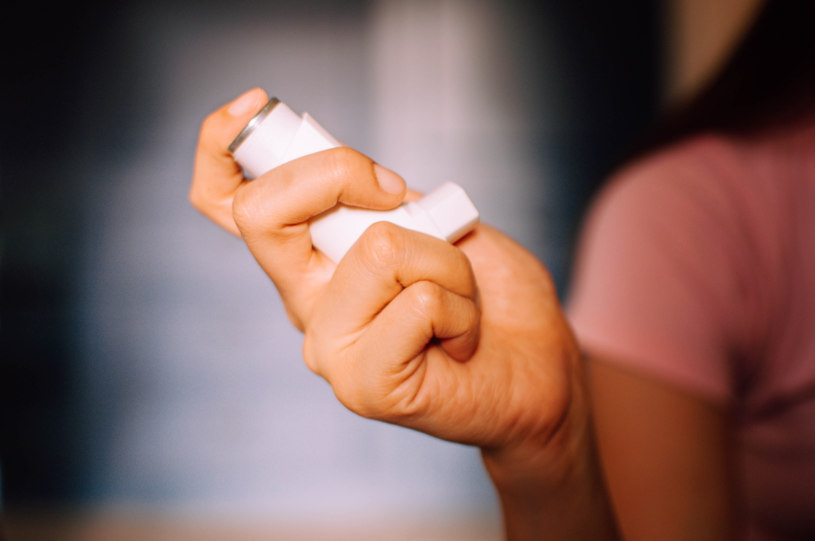Inhalant drugs, also called volatile solvents or aerosols, are volatile substances that vaporize to gaseous fumes at room temperature and are inhaled through the nose or mouth to enter the bloodstream via the lungs to produce psychoactive, or mind-altering effects.
Table Of Contents:
These substances can be found as components of innocuous household products such as solvents for glues, cleaning products, and adhesives, as propellants in aerosol paint sprays, hair sprays, and shaving creams, as thinners in paint products and correction fluids, and as fuels in gasoline or propane. Hence, nasal spray abuse and inhalant addiction is a worldwide public health concern, because of their common availability, legality, and inexpensiveness.
This article offers an overview of what are inhalants, and discusses topics such as examples of inhalants, the specificities of inhalant addiction and abuse, and the consequences of what inhalant abuse can cause, as well as how to recognize inhalant abuse symptoms and most importantly what treatment options are available for cases of inhalant addiction.
What Are Inhalants?
Inhalant drugs are volatile substances that vaporize to gaseous fumes at room temperature and are inhaled through the nose or mouth to enter the bloodstream via a transpulmonary route to produce rapid and short-lived psychoactive, or mind-altering, effects.
There is a vast variety of commercially available substances that are capable of producing volatile vapors that can induce psychoactive effects through an array of poorly understood pharmacologic mechanisms within a variety of brain systems. Inhalant drugs of abuse are currently the least-studied class of psychoactive agents. As a result, different types of inhalants lack a proper pharmacological classification based on the mechanism of action or their distinctive pattern of abuse and instead are grouped by form, product type, or intended use.
Types of Inhalants
As already mentioned, due to the lack of proper classification, inhalant drugs can be classified based on form, product type, or intended use. This article offers a classification of different examples of inhalants by four major categories.
Volatile Solvents are liquids that vaporize to gaseous fumes at room temperature. They can be found in:
- Paint thinners
- Nail polish remover
- Dry-cleaning fluids
- Gasoline
- Lighter fluid
- Rubber cement
- Correction fluid
- Felt-tip marker fluid
- Glues and adhesives
Aerosols are sprays that contain propellants and solvents. They can be found in:
- Deodorants
- Hair spray
- Spray cooking oil
- Spray fabric protector
- Pressurized electronic cleaning products or air duster sprays
Gasses can be found in both common household and commercial products or in the medical field as volatile anesthetics. These include:
- Household/Commercial– Butane lighter, Propane tanks, Refrigerants
- Medical– Chloroform, Halothane, Nitrous Oxide(“Laughing gas”)
- Nitrites– are a group of inhalant drugs that cause vasodilation and relaxation of smooth muscle and were once upon a time used to treat angina pectoris, a type of ischemic heart disorder. These agents (Isoamyl nitrite, Cyclohexyl nitrite, Isobutyl nitrite) are currently abused as “sexual enhancers” and can be found in Poppers, Video head cleaner, Room odorizer, Leather cleaner, Liquid aroma.
The degree and potency of the psychoactive effect produced by a specific type of inhalant substance will vary. Generally, people addicted to inhalants will abuse any of the aforementioned substances, however, others will go to extensive lengths to obtain a preferential substance.

How Are Inhalants Used?
As their name suggests, these agents are self-administered through the respiratory tract. Inhalant drugs can be breathed in via the nose or the mouth in a variety of ways which includes:
- Sniffing– chemical vapors directly from open containers
- Huffing– vapors from rags that have been soaked in a chemical substance then stuffed in the mouth or held against the face
- Bagging– which references to sniffing or inhaling chemical vapors from substances sprayed or deposited inside paper or plastic bags
- Inhaling from balloons or special devices called snappers, poppers or whippets that are filled with nitrous oxide
- Directly spraying aerosols into the nasal or oral cavities
- Pouring inhalants onto the user’s collar, sleeves, or cuffs and sniffing them over a period of time
Transpulmonary administration of inhaled chemicals allows for rapid systemic absorption and swift distribution to the central nervous system. This allows for intoxicating effects to occur within 5 minutes of inhalation, however, this experience is short-lived, which drives those who are addicted to inhalants to inhale repeatedly over the course of several hours to protract intoxication. Prolonged or repeated inhalant abuse can cause altered mentation and possibly even death, and should be avoided.
Are Inhalants Illegal?
The various examples of inhalants given above are NOT illegal. The United States National Drug Intelligence Center reports that the common household products that are misused as inhalants are legally available for their intended and legitimate use. However, several states have tried to prevent adolescent inhalant abuse by enacting laws banning the selling of commonly used inhalants from being sold to those under the age of 18.
Are Inhalants Addictive? The phenomenon of physical inhalant addiction which is characterized by neurobiological alterations within the brain is not characteristic of inhalants. However, other characteristics and effects of substance dependence such as risky use and negative health effects, impaired control over use, social impairment and neglect, and even inhalant withdrawal can occur with repeated use of inhalants. As such, it can be said that people can become addicted to inhalants.
Inhalant Abuse and Addiction Overview
Inhalant addiction and abuse has a great social stigma attached, and has even been termed the forgotten epidemic. Inhalant abuse refers to the intentional inhalation of vapors from commercial products or specific chemical agents to achieve intoxication, and its diagnostic criteria falls under the generic SUD diagnostic criteria outlined in the 5th edition of the Diagnostic and Statistical Manual of Mental Disorders.
Inhalant Abuse Statistics
Determination of accurate statistics regarding inhalant addiction and abuse is difficult due to social stigma, variabilities of survey methods, and various other factors. However, below are offered some important statistics provided by various nation-level surveys:
- The National Survey on Drug Use and Health (NSDUH) reports that approximately 9% of the United States population ≥12 years old -which is ~22.5 million people- have used an inhalant substance.
- Monitoring The Future (MTF) survey reported that inhalant use most commonly starts early, with more than half of responders reporting instances of first use before the tenth grade.
- Monitoring The Future (MTF) survey also suggests that many kids who start using inhalants also drop out of school early.
- The Youth Risk Behavior Survey (YRBS) reported that white and Hispanic students reported 14.4% lifetime use rates, which were approximately twice those of African Americans (8.5%).
Fortunately, organizations such as the National Survey on Drug Use and Health (NSDUH) and U.S. poison control centers have reported decreased rates of inhalant use and incidence of inhalant-related emergency room visits compared to the peak which occurred in the mid-1990s.

Signs and Symptoms Of Inhalants Abuse And Addiction
When discussing inhalant abuse symptoms and signs it is important to clarify the tell-tale signs which may alert one to their abuse. Acute inhalant abuse can cause the following symptoms and signs:
Physical Signs And Symptoms Of Inhalant Abuse Can Include:
- Chemical odor on breath or clothing
- Paint or chemical stains on clothing or body
- Spots or sores around the mouth
- Red eyes, nystagmus, and double vision
- Stained fingernails
Behavioral Signs And Symptoms Of Inhalant Addiction:
- Dazed appearance
- Dizziness or unsteadiness of gait
- Slurred speech
- Difficulty concentrating
- Irritability
- Anxiety or sleep disturbance
It is important to remember that these are the most common signs and symptoms of inhalants abuse and addiction. However various other physical and behavioral manifestations can also be present, since long term effects of inhalants may impose threat to different body systems of addicts.
Dangers of Inhalants Misuse
Dangerous consequences of inhalant misuse are mostly related to effects of acute intoxication on the cardiovascular, nervous, and pulmonary systems and to chronic misuse over several years which can cause end-organ damage.
These Inhalant Abuse Symptoms Include:
- Cardiovascular– Dysrhythmias, Hypoxia-induced heart block, Myocardial fibrosis, Sudden Sniffing Death Syndrome with Fatal cardiac arrhythmia.
- Dermatologic– Burns, Contact dermatitis, Perioral eczema
- Gastrointestinal– Hepatotoxicity, Nausea, or vomiting
- Hematologic– Aplastic anemia, Bone marrow suppression, Leukemia
- Neurologic– Ataxia, Neuronal degeneration, Seizures, Peripheral neuropathy, Sensorimotor polyneuropathy,
- Neuropsychiatric– Apathy, Dementia, Depression, Insomnia, Memory loss, Poor attention, Psychosis, Risk-taking behavior
- Pulmonary– Cough, Wheezing, Dyspnea, Asphyxiation, Emphysema, Pneumonitis
- Genitourinary– Risky sexual activity with links to increased HIV transmission has been associated with Volatile alkyl nitrite misuse.
Furthermore, because inhalants are commonly used alongside other drugs such as alcohol and sedative-hypnotics, they may be even more dangerous and lead to additional health problems not mentioned here.
Inhalants Withdrawal And Symptoms of Termination
Individuals who abruptly discontinue abuse of inhalant substances may experience inhalant withdrawal. Withdrawal refers to the unopposed residual counter-regulatory mechanisms that occur in the setting of abrupt cessation of drug use.
Withdrawal Symptoms Are Characterized By:
- Nausea, anorexia, and vomiting
- Anxiety with tremors, sweating, tics, and sleep disturbance
- Significant changes in mood and affect such as irritability and aggressiveness
These symptoms may be severe, and there is no effective treatment for them other than extra-vigilant and supportive symptomatic care. Thus, users should be warned to not discontinue inhalant use abruptly and to seek medical assistance if they wish to discontinue an inhalant substance they’ve been misusing for a long time.
Are Inhalants Detectable on Drug Tests and How Long Do They Stay in Your System?
No standard drug test can detect inhalant use as most inhalants contain many compounds, and no single assay can test for all of them. Furthermore, inhalants are not assessed on routine urine drug screening. However, if sufficient clinical suspicion exists based on history and S/S, specific urine drug testing can be employed which can detect urinary metabolites of some but not all chronically abused inhalants such as benzene, toluene, or a similar agent. Additionally, specialized tests can be run on specially collected blood samples, which can analyze the presence of certain compounds present in various inhalants. However, these tests are not routinely available.
Also, there is no standard length of time inhalant substances remain in biological samples such as urine, blood, hair or saliva. This duration depends on the specific agent misused.
Treatment for Inhalant Addiction
Since inhalants are often psychologically addictive before they become physically addictive, counseling is a good place to start for help. The type and duration of counseling will partly depend on the underlying issues which led a person to use inhalants in the first place. Those who caved to peer pressure may find it easier to work through internal issues than someone who began using it as a form of self-medication for a difficult situation or home life.
There Are Three Main Types of Counseling Addicts May Use to Get Clean:
- Support Groups– Support groups allow users to interact with and help other addicts, while also learning from a group leader or counselor. Being in a group can help increase accountability.
- Outpatient Counseling– Users may see a counselor or drug abuse specialist weekly or even several times a week to get to the bottom of their drug use during the outpatient rehabilitation. This is an invaluable tool for avoiding pitfalls and staying on the right track.
- Inpatient Rehabilitation– This method combines both a support group and counseling methods, but in a facility where users will have constant medical supervision and access to professional assistance.
Before counseling can begin, detoxification must take place. This is the process of getting off the drugs in question. While withdrawal symptoms are usually mild for those coming off inhalants (assuming no other drug addictions are present), the process can be physically uncomfortable. If noticed the inhalants use signs do not hesitate to turn to rehab facilities for assistance.
Hope Without Commitment
Find the best treatment options. Call our free and confidential helpline
Most private insurances accepted
Related Topics
- Inhalants Side Effects
- Whip-Its Abuse
- Huffing Air Duster
- Huffing Gas
- Nasal Spray Addiction
- Sniffing Glue
- Huffing Paint
Page Sources
- Anderson, C. E., & Loomis, G. A. (2003). Recognition and Prevention of Inhalant Abuse. American Fam Physician, 68(5), 869–874. https://www.aafp.org/afp/2003/0901/p869.html#afp20030901p869-b11
- Baydala L. (2010). Inhalant abuse. Paediatrics & child health, 15(7), 443–454.
- Beckley, J. T., & Woodward, J. J. (2013). Volatile solvents as drugs of abuse: focus on the cortico-mesolimbic circuitry. Neuropsychopharmacology : official publication of the American College of Neuropsychopharmacology, 38(13), 2555–2567. https://doi.org/10.1038/npp.2013.206
- Broussard L. A. (2000). The role of the laboratory in detecting inhalant abuse. Clinical laboratory science : journal of the American Society for Medical Technology, 13(4), 205–209.
- Wu, L. T., Schlenger, W. E., & Ringwalt, C. L. (2005). Use of nitrite inhalants ("poppers") among American youth. The Journal of adolescent health : official publication of the Society for Adolescent Medicine, 37(1), 52–60. https://doi.org/10.1016/j.jadohealth.2004.06.007
- Hasin, D. S., O'Brien, C. P., Auriacombe, M., Borges, G., Bucholz, K., Budney, A., Compton, W. M., Crowley, T., Ling, W., Petry, N. M., Schuckit, M., & Grant, B. F. (2013). DSM-5 criteria for substance use disorders: recommendations and rationale. The American journal of psychiatry, 170(8), 834–851. https://doi.org/10.1176/appi.ajp.2013.12060782
- Howard, M. O., Bowen, S. E., Garland, E. L., Perron, B. E., & Vaughn, M. G. (2011). Inhalant use and inhalant use disorders in the United States. Addiction science & clinical practice, 6(1), 18–31.
- Jain, R., & Verma, A. (2016). Laboratory approach for diagnosis of toluene-based inhalant abuse in a clinical setting. Journal of pharmacy & bioallied sciences, 8(1), 18–22. https://doi.org/10.4103/0975-7406.164293
- Lubman, D. I., Yücel, M., & Lawrence, A. J. (2008). Inhalant abuse among adolescents: neurobiological considerations. British journal of pharmacology, 154(2), 316–326. https://doi.org/10.1038/bjp.2008.76
- National Drug Intelligence Center. (2009). Inhalants Fast Facts. Justice.Gov. https://www.justice.gov/archive/ndic/pubs4/4770/index.htm
- National Institute on Drug Abuse. (2012). Inhalants Research Report. https://www.drugabuse.gov/download/1820/inhalants-research-report.pdf?v=5eca964ea01b25ded294000aca93f747
- NIDA. (2005, January 1). NIDA Community Drug Alert Bulletin - Inhalants. Retrieved from https://archives.drugabuse.gov/publications/nida-community-drug-alert-bulletin-inhalants on 2021, November 6
- NIDA. 2020, April 16. Inhalants DrugFacts. Retrieved from https://www.drugabuse.gov/publications/drugfacts/inhalants on 2021, November 5
- Shepherd R. T. (1989). Mechanism of sudden death associated with volatile substance abuse. Human toxicology, 8(4), 287–291. https://doi.org/10.1177/096032718900800406
- Substance Abuse and Mental Health Services Administration. Clinical Drug Testing in Primary Care. Technical Assistance Publication (TAP) 32. HHS Publication No. (SMA) 12-4668. Rockville, MD: Substance Abuse and Mental Health Services Administration, 2012.
- Wu, L. T., Schlenger, W. E., & Ringwalt, C. L. (2005). Use of nitrite inhalants ("poppers") among American youth. The Journal of adolescent health : official publication of the Society for Adolescent Medicine, 37(1), 52–60. https://doi.org/10.1016/j.jadohealth.2004.06.007

 Authored by
Authored by  Reviewed by
Reviewed by 